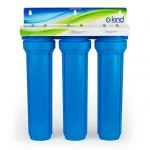This article contains book chapter excerpts from, Recovering Common Sense:Conscientious Health Care For The 21st Century, written by C. Norman Shealy, M.D., Ph.D., Sergey Sorin,M.D., DABFM & Amber Massey-Abernathy, Ph.D.
Leaky gut syndrome (LGS) is but one of several chronic conditions resulting from imbalances in the gut biome. (Irritable bowel syndrome and Crohn’s disease can be added to this list, as can celiac sprue.) In LGS, a weakening of the intestinal mucosal barrier can lead to inflammation and breaks in the protective intestinal wall, allowing toxins and infectious agents to invade the bloodstream and lymphatic system.

In battling these invaders, the body has two main defenders, the liver and the immune system.
The liver has a remarkable capacity for self- regeneration. When poor lifestyle choices—including chronic alcoholism and abusive drug use (prescription or otherwise)—push this miraculous organ beyond its limits, then liver function and structure will be compromised and eventually decompensate and fail.
The immune system consists of the thymus and bone marrow (these being the primary lymphoid organs), as well as the spleen, tonsils, lymph vessels, lymph nodes, adenoids, and skin (these being the secondary lymphatic tissues).
If you think of the body as a defensive fortification, these organs and tissues would serve as its earthworks and ramparts, protecting against threats external as well as internal.
A healthy immune system does a remarkable job in detecting, capturing, and removing toxins. Like the liver, however, it too can be overrun and brought to exhaustion.
Put simply, our immune systems wage a constant daily battle against environmental biotoxins and chemicals in the air, food, and water. It doesn’t help that we let in these toxic invaders of our own accord.
Through a lack of conscientiousness, we eat foods contaminated with growth hormones and pesticides; we drink polluted, fluoridated water; we breathe in fumes from nearby factories and their chemical waste dumps; we live under the EMF pollution of power lines and transformers.
Even when we think we’re being relatively healthy and conscientious, toxins creep in. That innocent box of cereal or protein bar may contain a GMO-contaminated food source: Unwary of dangers hidden inside, we give it entry like a Trojan Horse.
When the immune system begins to malfunction or fail, there is significant potential for developing allergies, chemical sensitivities, and frequent infections as well as autoimmune diseases.
We’ve already mentioned celiac sprue: Triggered by wheat gluten, the celiac suffer’s immune system turns against the body’s own cells and organs. (In the celiac’s case, it’s the intestinal mucosa and villi that are attacked and destroyed.)
An inflammatory response is a common means of immune- system defense. In rheumatoid arthritis—yet another chronic inflammatory condition—the body attacks its own synovium (that is, the tissue-membranes protecting one’s joints).
We know that it’s environmental, that it’s triggered by something in what we eat, drink, or breathe in. And if we were to take bets, we’d place our money on pesticides.
Autoimmune dysfunction can set off a vicious cycle of susceptibility to infections, which leads to an overreliance on antibiotics and other drugs and pharmaceuticals, which can wipe out “good bacteria” in the gut, which can lead to further infectious processes and inflammatory conditions (like IBS and Crohn’s disease), and so on …
Some Further Food Advice.
Start with Your pH. A good starting point in self- diagnosis is your body’s acidity level, which you can check via a simple pH strip test of your saliva.
Ideally, your pH will be 7.2 to 7.4. If you already are eating 80% of your food as veggies and fruits, but your pH is low (that is, too acidic), add one-half to one teaspoon daily of potassium gluconate.
Many decades ago—long before the current fad of “alkaline diets”—the great American medical psychic, Edgar Cayce (1677-1945), declared that “80% of all food eaten should be alkaline-reacting and only 20% acid-reacting” (Shealy, Energy Medicine p. 89). Generations of naturopaths have since been weaned on Cayce’s work.
You already know to avoid wheat, sugar, and fast food restaurants. In your food choices, you want to keep the pH ratio of 80% alkaline foods to 20% acidic foods.
Now, most fruits (excepting citrus) and veggies are alkaline, while most protein and carbohydrates are acidic.
That gives you a starting point: Try to keep your diet 80% fruits and veggies and 20% protein and carbs. You’ve heard of the classic “square meal,” consisting of a protein, a starch (typically potato), and one vegetable.
That doesn’t cut it for the 21st century! In any meal, try not to mix proteins and carbs (e.g., steak and potatoes).
Instead, combine protein with fruit/veggies. If you want to have a carbohydrate, try a baked sweet potato combined with fruits/veggies.
Limiting portion size can be helpful: Portions in restaurants (and even homecooked meals) tend to be piled on. Put less on your plate! You can go back for seconds if you choose. Intermittent fasting or changing your scheduled meal times can give your GI tract a much-needed break and chance to recover.
For example, eat two meals per day, with breakfast at 6am and dinner at 6pm and no food intake (no snacking!) in between these twelve-hour intervals. (Breakfast can be thought of as “breaking one’s overnight fasting.”)
And the best-ever breakfast is a morning slush with 24 to 36 grams of whey protein, 2 tablespoons of beef gelatin, a heaping teaspoon of Berry Fusion, a packet of Kyani Sunrise and 2 tablespoons of tart cherry juice concentrate, giving you a whopping 14,500 ORACS (antioxidants) to start your health day.
Eating no later than two hours before bedtime is another helpful way to allow better digestion and prevent reflux.
If you need further guidance, there are commercial diet plans—the Atkins Diet, South Beach Diet, and Weight Watchers among others—that balance healthy proteins with vegetables (plus or minus fruits).
There are many ways to achieve healthy nutrition!
For more information or to order my book, Recovering Common Sense:Conscientious Health Care For The 21st Century, visit RealHolisticDoc.com

Author: Norman Shealy, MD., PhD Father of Holistic Medicine,CEO of Shealy-Sorin Wellness Institute, Inventor of the TENS, Creator of BIOGENICS, Author of 35 books & many other medical breakthroughs and inventions.
This article contains book chapter excerpts from, Recovering Common Sense:Conscientious Health Care For The 21st Century, written by C. Norman Shealy, M.D., Ph.D., Sergey Sorin, M.D., DABFM & Amber Massey-Abernathy, Ph.D. Copyright © 2021 Shealy-Sorin Wellness Institute. All rights reserved.
The views expressed in this work are solely those of the authors. The authors of this book do not dispense medical advice or prescribe the use of any technique as a form of treatment for physical, emotional, or medical problems without the advice of a physician, either directly or indirectly.
The intent of the authors is only to offer information of a general nature to help you in your quest for emotional and spiritual well-being. In the event you use any of the information in this book for yourself, which is your constitutional right, the authors and the publisher assume no responsibility for your actions.

Helen Bradley is a health blogger and the founder of her own blog about fitness. She has been blogging for three years now and loves to share what she learns with others. Helen enjoys reading, cooking, and staying active outdoors.












